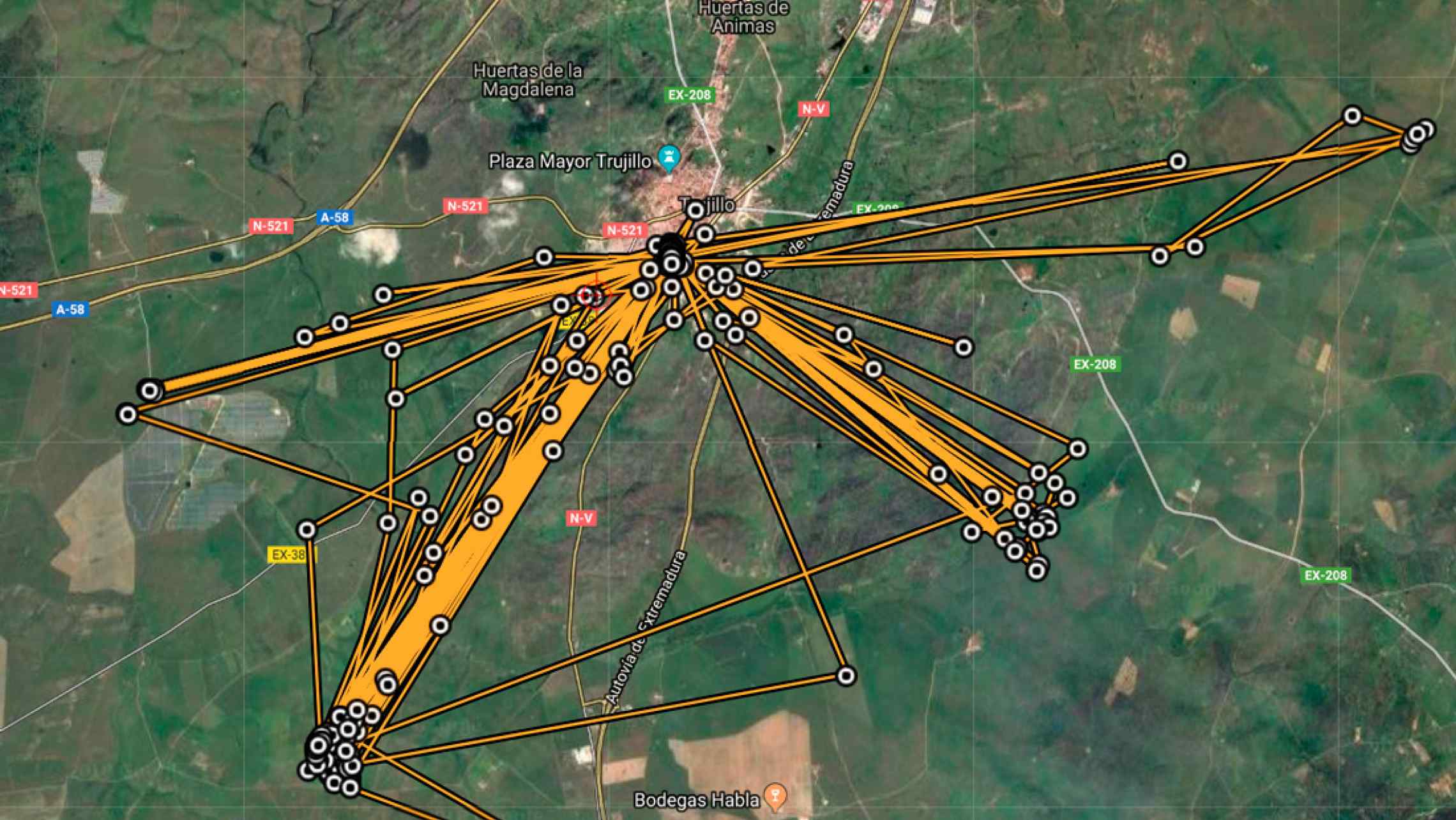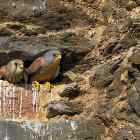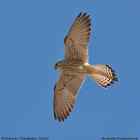The lesser kestrels that have been tagged with GPS transmitters are starting to provide information of great interest for the conservation of the species
The individual lesser kestrels that have been tagged with GPS transmitters from colonies in the church of the Jara in Acedera (Badajoz), the house of La Enjarada (Cáceres) and the i-Novo silo (Trujillo), are providing a large quantity of data about their daily movements, activity cycles and areas used for foraging.
Obtaining this information is one of the objectives of action A2 of the LIFE ZEPAURBAN (Study and characterisation of the feeding habitat of the lesser kestrel in urban SPAs and roosts in Extremadura), and represents the first step in developing a habitat management strategy to guarantee the conservation of the populations of lesser kestrels in our urban SPAs.
One of the first analyses that have been carried out consists in determining with precision the hunting areas that each lesser kestrel colony uses in the surroundings of the selected urban SPAs in order to focus management work in these areas. Once the feeding areas have been identified, samples will be taken to measure the densities of the principal prey species of lesser kestrels (Gryllotalpa, Ephippiger, Decticus, Tettigonia…), in order to measure availability on the ground and at the same time to carry out a characterisation of the habitat selected as the hunting zone by the birds, which may well change during the breeding season.
However, this is not the only use that will be put to the large volume of data collected so far and expected in the future, since the degree of precision that can be achieved by the installed devices will enable us to investigate in depth many aspects of the biology and ecology of the lesser kestrel, which will doubtless have important repercussions for its future conservation.










